If you’re looking for a beginner-friendly houseplant with beautiful variegated leaves, then you’ll love Syngonium Variegata! Also known as the Arrowhead Plant or Goosefoot Plant, this fast-growing plant is native to Central and South America. In its natural habitat, it can grow to be a large vine, but when grown indoors, it is more typically seen as a compact, bushy plant. There are many different varieties of Syngonium Variegata, each with its own unique leaf pattern and color.
This easy-to-care-for plant thrives in bright, indirect light and can tolerate lower light levels, making it a great choice for a wide range of homes and offices. Keep the soil evenly moist (but not soggy) and allow the top few inches to dry out before watering. With a little bit of TLC, your Syngonium Variegata will thrive and bring a touch of the tropics to your indoor space!
A Description of Syngonium’s Characteristics
These plants are easy to care for and make great houseplants. The leaves are usually dark green in color, but some species can have variegated leaves with white or cream-colored patterns. Syngoniums are a type of evergreen vine that is native to the tropical rainforests of Central and South America. The flowers of syngoniums are small and white, and they grow in clusters. The leaves of these plants are simple and come in a variety of shapes and sizes, depending on the species.
How to Care for Syngonium Variegata
With its variegated leaves, it adds a touch of color to any room. Here are a few tips on how to care for your Syngonium Variegata: Syngonium Variegata is a beautiful houseplant that is easy to care for.
-Place the plant in a location that receives indirect sunlight.
-Water the plant when the soil is dry to the touch.
-Fertilize the plant monthly during the growing season.
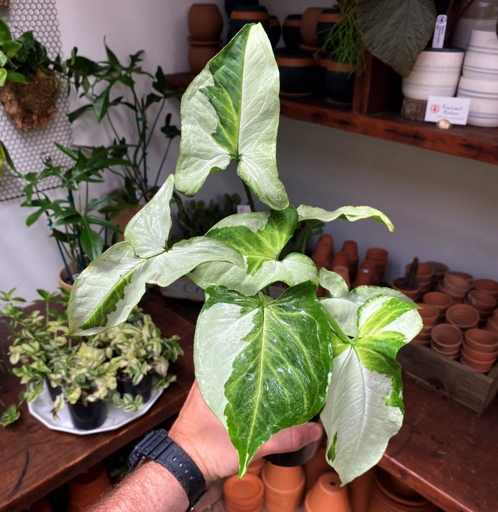
-Prune the plant as needed to keep it looking its best.
With a little care, your Syngonium Variegata will thrive and add beauty to your home.
Low Temperature Affects Decorative Appearance of Variegated Syngonium
The leaves are arrowhead-shaped and are variegated with white, cream, or yellow. It is a fast-growing, evergreen vine that can reach up to 20 feet in length. Variegated syngonium is a tropical plant that is native to Central and South America. The flowers are small and white, and they are followed by small, green berries.
However, it will tolerate lower temperatures and lower humidity levels. If the temperature drops below 50 degrees Fahrenheit, the leaves of the plant will start to turn brown and drop off. It prefers warm temperatures and high humidity. This plant is grown as a houseplant in most parts of the world. The plant will also stop growing.
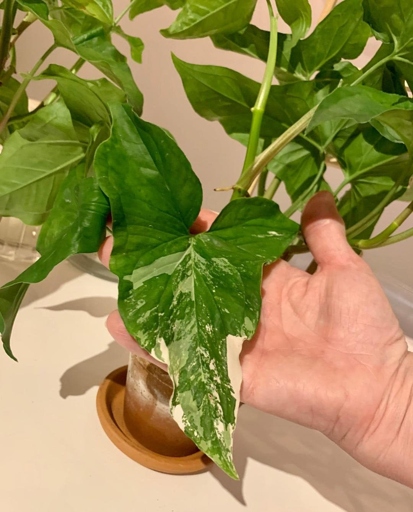
If you live in an area with cold winters, it is best to grow variegated syngonium in a pot that can be brought indoors. This will protect the plant from the cold and allow it to continue growing throughout the year.
Variegated Syngonium Need More Lighting
Syngonium Variegata is a beautiful, easy to care for houseplant that does best in bright, indirect light. If you are looking for a plant to add some color and interest to your home, Syngonium Variegata is a great choice!
Syngonium Variegata is also known as Arrowhead Vine, Goosefoot, or Nephthytis. Syngonium Variegata is a tropical plant, native to Central and South America. It is a member of the Araceae family, which includes plants such as Philodendron and Dieffenbachia.
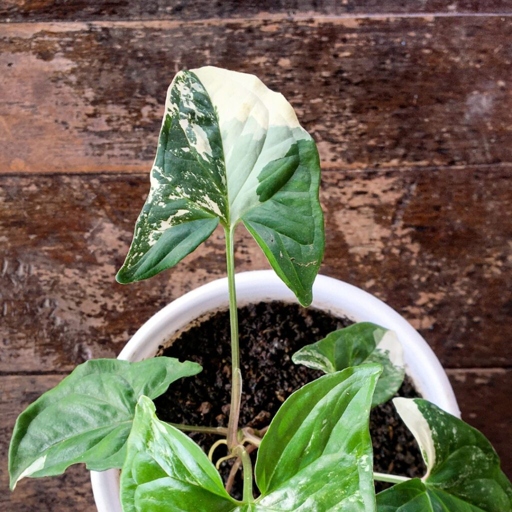
This plant is easy to care for and is a great choice for beginners. Syngonium Variegata does best in bright, indirect light. It can tolerate lower light levels, but will grow slower and may lose some of its variegation. If you are looking for a plant to add some color and interest to your home, Syngonium Variegata is a great choice!
Hydrating and Watering
The best way to provide adequate humidity is to mist the leaves daily with clean water. These plants are native to tropical regions and require high humidity to thrive. Watering and hydration are key to keeping your Syngonium plant healthy. You can also use a humidifier to raise the humidity levels in your home.
These plants are sensitive to fluoride and chlorine, so it’s important to use filtered or distilled water. Over-watering can lead to root rot, so be sure to drainage holes in the pot and never let the plant sit in water. Syngonium plants need to be watered regularly to keep the soil moist but not soggy. Allow the top inch of soil to dry out before watering again.
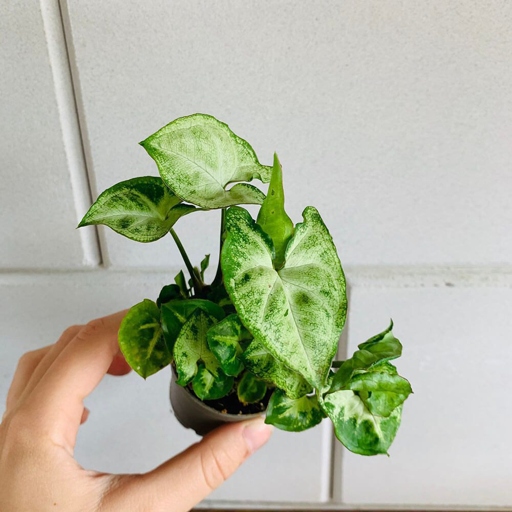
Reduce fertilization to once a month during the winter. Fertilize your Syngonium plant every two weeks during the growing season with a balanced liquid fertilizer. Be sure to dilute the fertilizer according to the package directions.
Feeding
These plants are native to Central and South America and are related to Philodendrons. They’re known for their beautiful, variegated leaves and their ability to thrive in a wide range of conditions. If you’re looking for a low-maintenance, easy-to-care-for houseplant, the Syngonium variegata is a great option.
If you notice that your plant is starting to look pale or its leaves are yellowing, this is a sign that it’s not getting enough nutrients. A general-purpose, balanced fertilizer will do the trick. When it comes to feeding, Syngonium variegata are not particularly fussy. Feed your plant every two weeks during the growing season and every month during the winter.
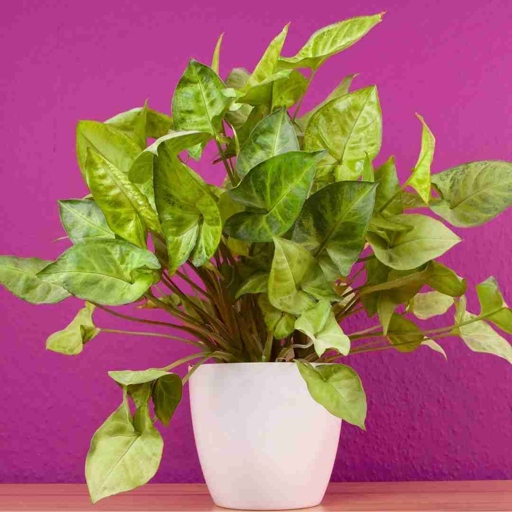
As with all plants, it’s important not to over-fertilize. If you’re not sure how much fertilizer to use, it’s always better to err on the side of caution and use less rather than more. This can lead to problems such as leaf burn or root rot.
Pruning
Pruning is an important part of caring for your Syngonium plant. When pruning, be sure to remove any dead or dying leaves and stems. You can also trim back any overgrown areas to help the plant maintain its shape. It helps to encourage new growth and keep the plant looking its best.
Transplanting Annually is Necessary
Transplanting also gives you an opportunity to check the roots for pests or disease, and to trim them back if necessary. It’s best to transplant Syngonium variegata in the spring, before new growth begins. Annual transplanting is a necessary part of Syngonium variegata care. The plant will quickly outgrow its pot, and will need to be moved to a larger one.
How to Propagate Variegated Syngonium
It is characterized by its glossy, heart-shaped leaves that are variegated with shades of green, white, and cream. The variegated syngonium is a fast-growing plant that can reach up to 6 feet in height. If you’re looking for a plant that is easy to care for and is sure to make a statement, look no further than the variegated syngonium. This tropical plant is native to Central and South America and is a member of the aroid family, which includes plants such as philodendrons and anthuriums.
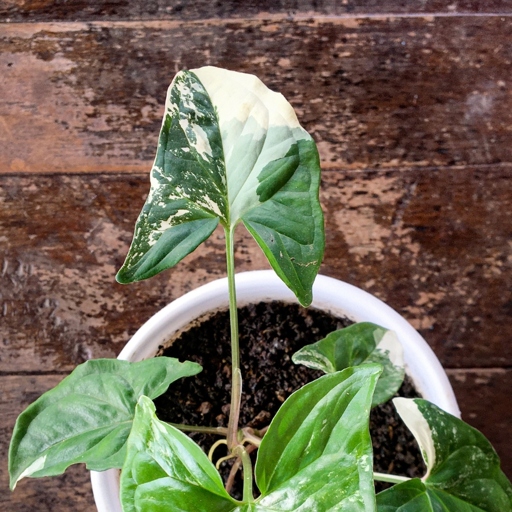
Simply take a stem cutting that includes at least two leaves and place it in a glass of water. Allow the soil to dry out slightly between waterings. The variegated syngonium is a relatively easy plant to care for. Propagating variegated syngonium is also relatively easy. Once the roots are several inches long, you can pot the cutting in soil. During the growing season, fertilize monthly with a balanced fertilizer. Change the water every few days and within a few weeks, you should see roots beginning to form. It prefers bright, indirect light but can tolerate lower light levels.
Using the Apical Shoots
The Apical Shoots are the young leaves that grow at the tips of the plant. They are the most nutritious part of the plant and are rich in vitamins and minerals. They can also be used to make a tea. The Apical Shoots can be eaten raw or cooked.
Propagation with a Stem Cutting
It’s a pretty straightforward process, and you can do it with just a few supplies. If you want to propagate your Syngonium variegata, stem cuttings are the way to go.
First, you’ll need a sharp knife or pair of scissors. Cut a stem that’s about 6 inches long, and make sure the cutting has at least two leaves.
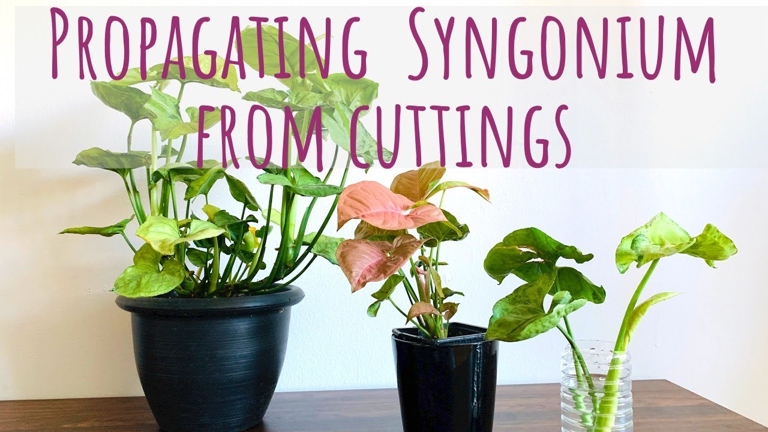
Next, find a pot that’s big enough for the cutting, and fill it with a well-draining potting mix. Stick the cutting into the mix, making sure that the leaves are above the soil line.
Keep the soil moist, but not soggy, and in a few weeks you should see new growth. Water the cutting well, and then place the pot in a warm, bright spot.
Variegated Syngonium Varieties
The syngonium plant gets its name from the Greek words “syn,” meaning “together,” and “gonium,” meaning “knot,” referring to the way the leaves are clustered together at the stem. This tropical plant is native to Central and South America and is a member of the aroid family, which also includes philodendrons and pothos plants. If you’re looking for a plant that’s easy to care for and is sure to make a statement, look no further than the variegated syngonium.
Other popular varieties include the Syngonium erythrocaulon, which has red stems and leaves, and the Syngonium alatum, which has wing-shaped leaves. There are many different varieties of variegated syngoniums, each with its own unique leaf pattern. The most common variety is the Syngonium podophyllum, which has dark green leaves with white or cream-colored variegation.
They prefer bright, indirect sunlight and should be watered when the top inch of soil is dry. These plants are also known for being fast growers, so be sure to fertilize them every few weeks during the growing season. No matter which variety you choose, syngoniums are easy to care for.
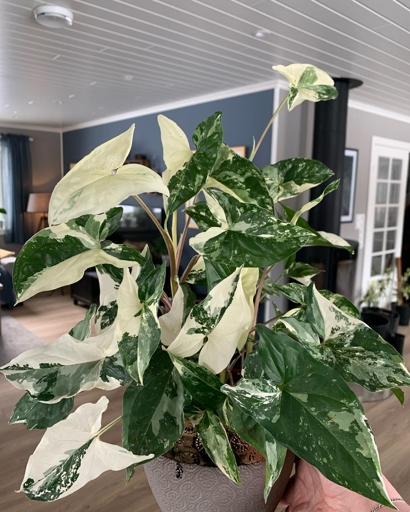
The syngonium plant gets its name from the Greek words “syn,” meaning “together,” and “gonium,” meaning “knot,” referring to the way the leaves are clustered together at the stem. This tropical plant is native to Central and South America and is a member of the aroid family, which also includes philodendrons and pothos plants. If you’re looking for a plant that’s easy to care for and is sure to make a statement, look no further than the variegated syngonium.
Other popular varieties include the Syngonium erythrocaulon, which has red stems and leaves, and the Syngonium alatum, which has wing-shaped leaves. There are many different varieties of variegated syngoniums, each with its own unique leaf pattern. The most common variety is the Syngonium podophyllum, which has dark green leaves with white or cream-colored variegation.
They prefer bright, indirect sunlight and should be watered when the top inch of soil is dry. These plants are also known for being fast growers, so be sure to fertilize them every few weeks during the growing season. No matter which variety you choose, syngoniums are easy to care for.
Syngonium ‘Neon’
Syngonium ‘Neon’ is a beautiful, variegated cultivar of the Syngonium plant. This plant is easy to care for and makes an excellent houseplant. It is characterized by its bright green leaves with white and pink variegation.
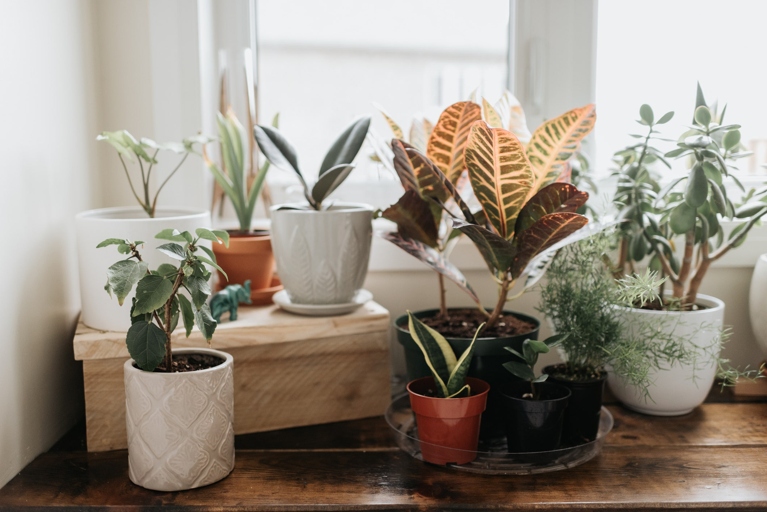
Syngonium ‘Neon’ does best in bright, indirect light. This plant prefers to be on the drier side, so allow the soil to dry out completely between watering. It can tolerate lower light levels, but the variegation will be less pronounced.
Keep the cutting in a warm, humid environment until it begins to root. Simply take a cutting from an existing plant and pot it up in moist soil. This plant is easy to propagate from stem cuttings.
Syngonium Panda
Panda is a type of Syngonium that has dark green leaves with white veins. Syngonium Panda is a beautiful, easy to care for houseplant. It is a fast-growing plant and can reach up to 2 feet tall. It is perfect for beginners or those who don’t have a lot of time to care for their plants. Panda is easy to propagate and makes a great addition to any indoor plant collection.
Syngonium Albo Variegata Imperial White
It’s easy to care for, making it a great choice for beginners. The Syngonium albo variegata imperial white is a beautiful plant with variegated leaves. This tropical plant is native to Central and South America. This plant does best in bright, indirect light. Water when the soil is dry to the touch. Fertilize monthly during the growing season. The leaves are white with green margins.
Syngonium Pixie
The Pixie is a small, compact plant that is perfect for growing in pots or hanging baskets. There are many different species of syngonium, but the most popular one is the Syngonium Pixie. It has dark green leaves with white or pink variegation. Syngoniums are a type of evergreen vine that is native to Central and South America.
Syngoniums are easy to care for and make great houseplants. They prefer bright, indirect light but can tolerate low light conditions. Water when the soil is dry to the touch and fertilize monthly during the growing season.

If you are looking for a plant that is easy to care for and adds a touch of color to your home, the Syngonium Pixie is a great choice!
Syngonium Pink
With proper care, this plant can thrive for years. It’s perfect for adding a pop of color to any indoor space. Syngonium Pink is a beautiful, pink-hued variety of the Syngonium plant.
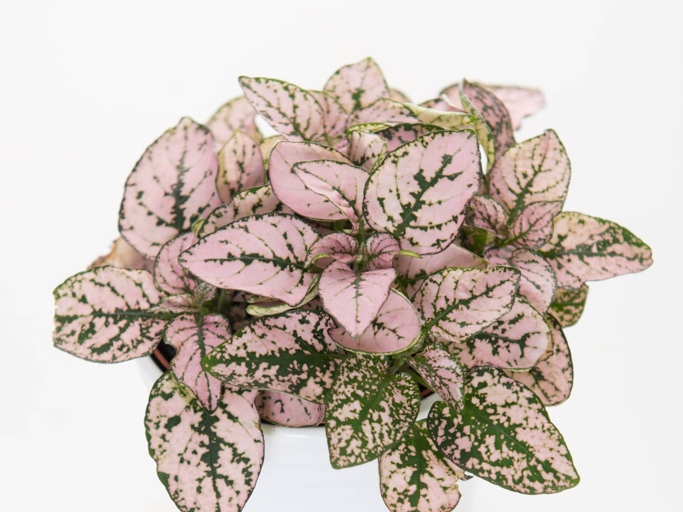
Here are a few tips for caring for your Syngonium Pink:
– Place the plant in a bright, indirect light.
– Water when the soil is dry to the touch.
– Feed monthly with a balanced fertilizer.
– Cut back on watering in the winter.
With a little TLC, your Syngonium Pink will thrive and bring beauty to your home for years to come.
Syngonium Regina Red
The flowers are small and white, and they bloom in the summer. This plant is native to Central and South America. It is an evergreen climber that can reach up to 10 feet in length. The leaves are oval-shaped with pointed tips and have a glossy texture. Syngonium Regina Red is a beautiful, deep red variety of Syngonium.
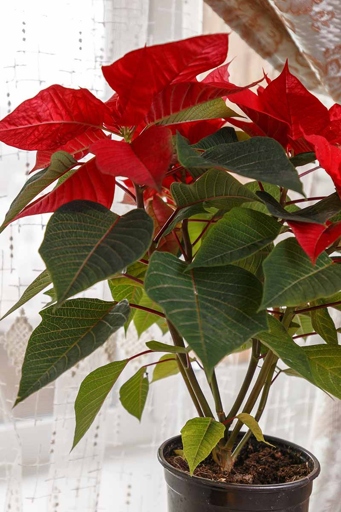
This plant is easy to care for and is a great choice for beginners. Water when the soil is dry to the touch. It does well in bright, indirect light and can tolerate some shade. Allow the soil to dry out completely between waterings. Fertilize monthly during the growing season.
This plant is not tolerant of cold temperatures. It makes a great addition to any indoor space. If the temperature drops below this, the leaves will start to drop off. Syngonium Regina Red is a beautiful plant that is easy to care for. It should be kept above 60 degrees Fahrenheit.
Syngonium Aurora
The flowers are small, white, and borne in clusters. It is a fast-growing, evergreen vine that can reach up to 15 feet in length. The leaves are alternate, ovate-shaped, and have a glossy, dark green color with white or cream-colored stripes running down the center. Syngonium aurora is a beautiful, variegated plant that is native to Central and South America.
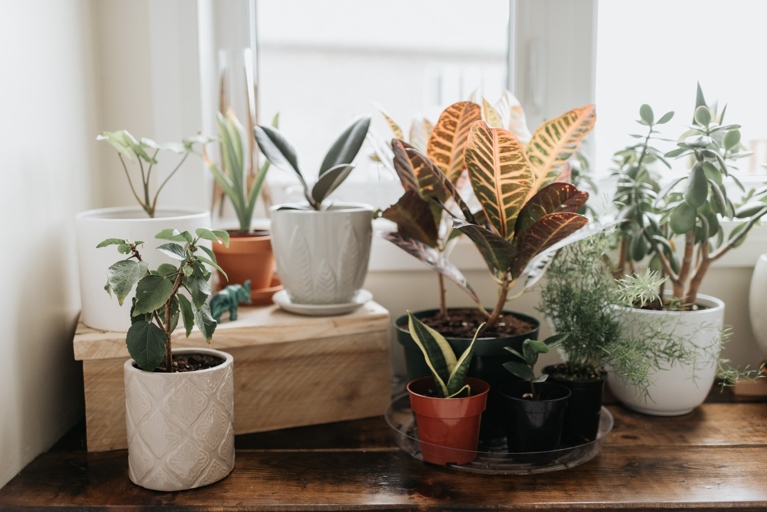
Allow the soil to dry out completely between waterings to prevent root rot. This plant is easy to care for and is a great choice for beginners. Water when the soil is dry to the touch. Fertilize monthly during the growing season. It prefers bright, indirect light but can tolerate low light conditions.
Syngonium aurora is a beautiful plant that is easy to care for. It is a great choice for beginners or for those who want a low-maintenance plant.
Syngonium Confetti Tricolor
The Syngonium Confetti Tricolor is a low-maintenance plant that is easy to care for. The Syngonium Confetti Tricolor is a beautiful and unique type of Syngonium that is perfect for any indoor plant collection. This plant is native to Central and South America and is known for its colorful leaves. The leaves of this plant are variegated with shades of green, yellow, and pink, which makes it a stunning addition to any room. The Syngonium Confetti Tricolor is a beautiful and unique plant that is perfect for any indoor plant collection. When watering, be sure to allow the soil to dry out completely before watering again. It does best in bright, indirect light but can also tolerate low light conditions. This plant is also tolerant of drought and can go long periods without water.
Syngonium Butterfly
Syngonium Butterfly is a beautiful houseplant that is easy to care for. It has long, cascading leaves that are variegated with white, green, and pink. It is a low-maintenance plant and does not require much fertilizer or water. The plant is native to Central and South America and is related to the Philodendron. Syngonium Butterfly is a fast-growing plant and can reach up to 6 feet in height.
Syngonium Christmas
Syngonium Christmas is an ideal plant for beginners. It is a fast-growing plant and can reach up to 6 feet tall. Syngonium Christmas is a beautiful, easy-to-care-for houseplant. The leaves are shaped like arrows, which is why it is also known as the Arrowhead Plant. It has glossy, dark green leaves with white or cream-colored veins. It is very easy to care for and is very tolerant of neglect. Syngonium Christmas is native to Central and South America.
Syngonium Brocante
It is a fast-growing, evergreen climber that can reach up to 6 feet in length. Syngonium Brocante is a beautiful, variegated type of Syngonium that is native to Central and South America. The flowers are small and white, and they bloom in the summer. The leaves are oval-shaped and have a dark green color with white or cream-colored stripes running along the veins.
It does well in both bright light and low light, and can tolerate some shade. This plant is easy to care for and is a great choice for beginners. It prefers to be kept moist, but can tolerate periods of drought. It is not particular about soil type, but does best in well-drained soil.
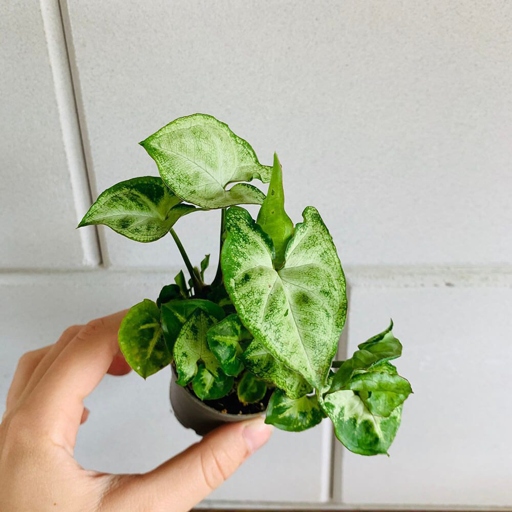
It is a great choice for both beginners and experienced gardeners alike. Syngonium Brocante is a beautiful plant that is easy to care for.
Syngonium Arrow
Syngonium Arrow is a beautiful houseplant that is easy to care for. It has long, arrow-shaped leaves that are variegated with green and white. This plant is native to Central and South America, and it is a member of the Araceae family. Syngonium Arrow is a fast-growing plant, and it can reach up to 3 feet in height. It is an evergreen plant, and it will produce white flowers if it is given the proper care.
Variegated Syngonium Problems
Variegated syngoniums are beautiful, easy-to-care-for houseplants that can brighten up any indoor space. However, like all plants, they can sometimes experience problems. Here are some of the most common variegated syngonium problems and how to solve them.
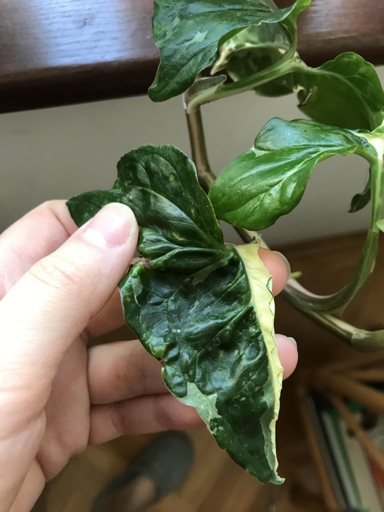
Try to adjust your watering and light levels accordingly and see if the problem improves. Yellow leaves: If your variegated syngonium’s leaves are turning yellow, it could be a sign of too much water or too little light.
If it’s not getting enough water, increase your watering frequency. If you think your plant is getting too much sun, try moving it to a shadier spot. Brown leaves: Brown leaves can be caused by a number of things, including too much sun, too little water, or pests. And if you see any pests, be sure to remove them and treat the plant with an appropriate insecticide.
If you think your plant might be lacking in nutrients, you can try feeding it a diluted liquid fertilizer. Dropping leaves: If your variegated syngonium is losing its leaves, it could be a sign of too much or too little water, too much or too little light, or a nutrient deficiency. Again, try to adjust your watering and light levels and see if the problem improves.
Variegated Syngonium Toxicity
If you’re looking for a beautiful, easy-to-care-for houseplant, the variegated syngonium (Syngonium podophyllum) is a great choice. But before you bring one home, it’s important to know that all parts of the plant are poisonous if ingested.
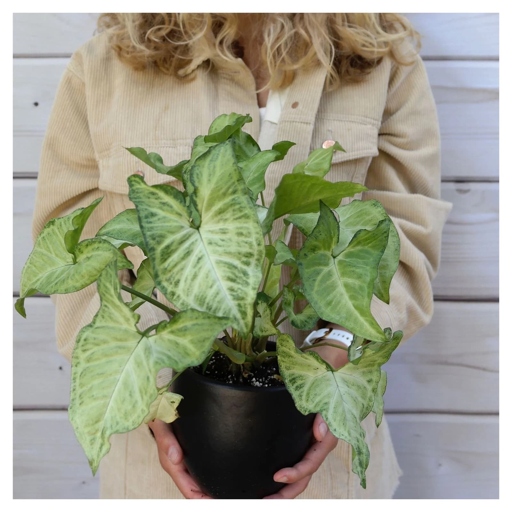
If you or your child ingests any part of the plant, call your doctor or poison control center immediately. Symptoms of variegated syngonium toxicity include nausea, vomiting, and diarrhea.
With its glossy leaves and pretty variegated foliage, it’s easy to see why this plant is so popular. While the variegated syngonium is a beautiful plant, it’s important to keep it out of reach of children and pets. But it’s important to remember that it’s also poisonous, so take care to keep it out of reach of little ones.
Frequently Asked Questions
1. What is Syngonium Variegata?
Syngonium Variegata is a species of aroid, and is a common houseplant. It is native to Central and South America. The leaves are variable in shape, and the plant can climb or trail.
2. How do I care for Syngonium Variegata?
Water when the soil is dry, and fertilize monthly during the growing season. Place the plant in bright, indirect light.
3. What are the 12 types of Syngonium Variegata?
The 12 types of Syngonium Variegata are: Arrowhead Plant, Nephthytis, Goosefoot Plant, African Evergreen, American Evergreen, Brazilian Evergreen, Emerald Gem, Exotic Evergreen, Five-leaved Arum, White Butterfly, Variegated Arrowhead, and Variegated Goosefoot.
4. What are the benefits of Syngonium Variegata?
Syngonium Variegata can purify the air of formaldehyde and benzene, and is effective in absorbing carbon dioxide.
5. Are there any precautions I need to take when handling Syngonium Variegata?
The sap of the Syngonium Variegata plant can cause skin irritation, so it is important to wear gloves when handling the plant.
Final thoughts
Syngonium Variegata is a beautiful houseplant that is easy to care for. With a little bit of knowledge, you can keep your Syngonium Variegata healthy and happy. There are 12 different types of Syngonium Variegata, each with its own unique appearance. With the right care, your Syngonium Variegata will thrive and bring beauty to your home for years to come.
